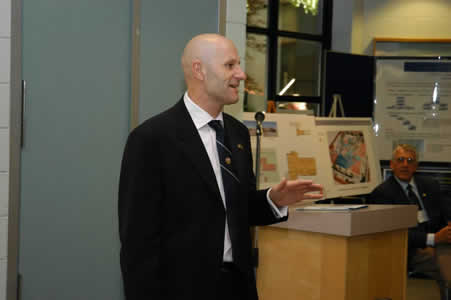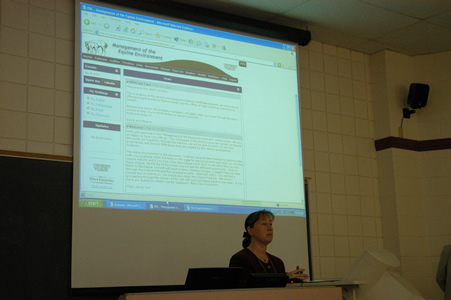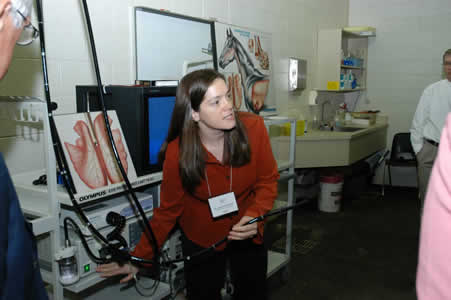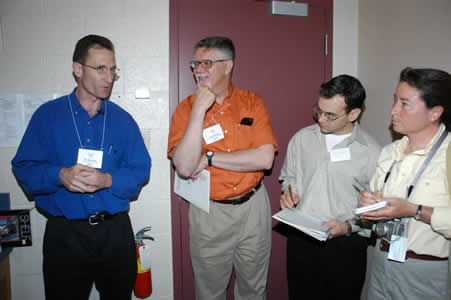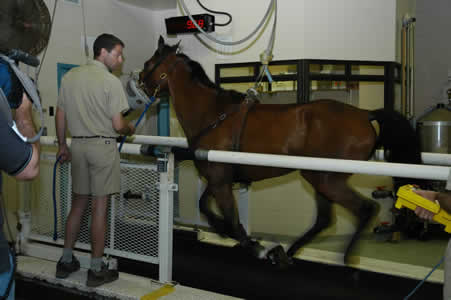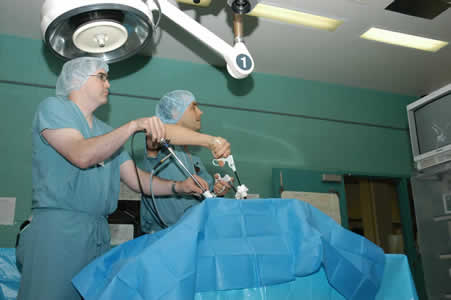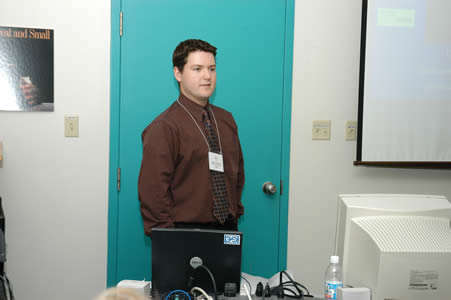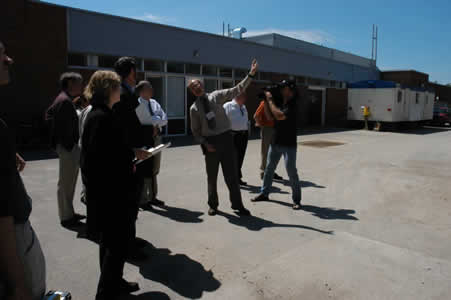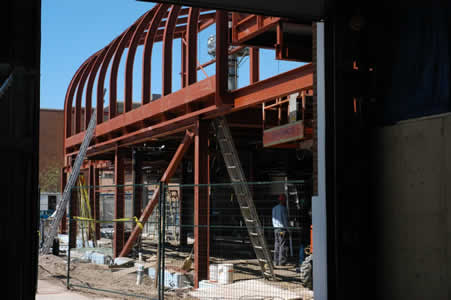ARCHIVE EQUINE NEWS STORIES
| Current news is available at TheHorsePortal.ca, Equine Guelph's online learning platform for practical, quick learning. Given the vast amount of information on horse health and welfare, Equine Guelph has archived its past news articles from 2002-2020. They are listed below, along with a search function available to find specific healthcare topics. | |
Equine Guelph's Media Open HouseJune 2004
Equine Guelph, a portal for equine-related research, communication and education at U of G, opened its doors on June 3, 2004 and welcomed the equine industry media and organization representatives. The goal of the event was to introduce Equine Guelph’s role in Ontario’s equine industry to show first-hand how new discoveries in equine health and performance are benefiting horses and horse enthusiasts in Ontario. Equine Guelph is a partnership between the province’s equine industry and the University. Since its inception last summer, Equine Guelph has increased communication between equine researchers and supporters, ensured broad industry representation in decision-making, and built a strong vision for the future.
With keen interest Byron Beeler (Chair, Equine Guelph Advisory Council) watches Dr. Alastair Summerlee (President, University of Guelph) welcoming the group of equine industry media and representatives from equine industry organisations.
(All Photos: Grant Martin)A special “behind the scenes” look at the high tech equipment used for research and diagnostics was a highlight of the day. Groups were guided through tours by Dr. Chris Brown (Acting Director, Veterinary Teaching Hospital), Dr. Dan Kenney (Large Animal Clinic Head) and Dr. Laurent Viel (Professor, Equine Medicine). Tours of Equine Guelph’s research and service initiatives included performance testing of racehorses and innovative surgery techniques. Equine Guelph researchers and representatives from the equine industry were also on hand to answer questions.
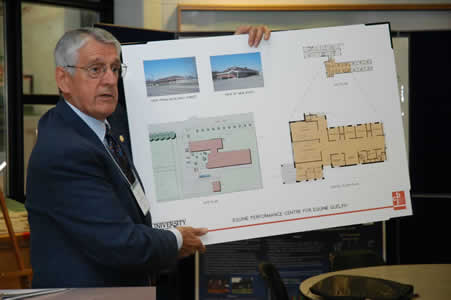
Byron Beeler (Chair, Equine Guelph Advisory Council) proudly displays future plans of
the Equine Performance Centre, University of Guelph.In addition to research, Equine Guelph undertakes outreach and communications activities and offers an award-winning Equine Science Certificate program through the Office of Open Learning. This innovative University of Guelph program is a partnership between Equine Guelph and the Office of Open Learning, consisting of six 12-week courses completed online. Courses include:
Management of the Equine Environment, Horse Health and Disease Prevention, Growth and Development, Equine Nutrition, Functional Anatomy and Exercise Physiology.Almost 400 students from around the world have joined this unique online learning community in the first two years of the program. New and evidence-based information is included in the courses with a practical application to improve the health and welfare of the horse. Instructors and guest speakers include university faculty, staff and industry experts from Canada, the U.S. and elsewhere. For more information: www.equinesciencecertificate.com
An engaged group of horse industry media and representatives are introduced to the online Equine Science Certificate Program by Gayle Ecker (Senior Manager, Equine Guelph) and Melanie Prosser (Program Manager, Office of Open Learning).Respiratory problems in horses continues to be a concern for the industry due to the profound effects it can have on health and performance. Attendees learned about the differences between upper airway function of normal versus diseased horses while undergoing treadmill exercise as was presented by video.
Dr. Joanne Hewson (Assistant Professor, Clinical Studies) demonstrates the use of the endoscope – a diagnostic tool used to examine upper and lower airway function of the performance horse.Guests had a rare chance to watch a horse go through its paces on the high speed treadmill, a valuable piece of equipment that has opened up many possibilities for performance diagnosis and research. Determination of maximum oxygen uptake with a horse on the treadmill was demonstrated. This test (known as VO2 Max in exercise physiology and the performance testing disciplines)is a measure of the maximum rate at which the cardiovascular and respiratory system can supply oxygen to the exercising tissues, and it is a measure of 'performance' fitness. The test is often used along with a simultaneous measure of the exercise level that leads to a switch from aerobic to anaerobic energy utilization by exercising muscles.
Dr. Ray Geor (Associate Professor, Biomedical Sciences) discusses with John Walzak ( Ontario Harness Horse Association and Equine Guelph Advisory Council member) the use of treadmill exercise studies used to evaluate performance fitness.Treadmill exercise studies are also used to evaluate the upper airway function under exercise conditions, to evaluate the response to certain types of therapeutic agents in exercising horses, to study the effects of diet and environment on exercise performance, and to obtain post-exercise muscle biopsy samples to look for metabolic and certain congenital problems.
Tye, part of the University of Guelph’s research herd, is set through his paces for a series of performance tests.Research efforts have been successful in finding less invasive methods to performing various surgeries on horses. Development of this surgical technique, and the associated required anaesthesia, has been accomplished through recent research investigations funded by the equine industry. The methodology is now being used for client owned animals. In parallel with the increased use of this methodology, researchers are currently investigating the use of cartilage transplants for repair of joint injuries, and of antibiotic infusions and implants for treatment of infected joints.
Dr(s) Ludovic Bouré (Associate Professor) and Shawn Mattson (Assistant Professor, both from Clinical Studies) demonstrate new less invasive surgical techniques for performing both joint surgery (arthroscopy) and abdominal surgery (laparoscopy).Directed by Dr Jeff Thomason, Professor, Department of Biomedical Sciences (anatomist), this exciting computer modelling project was presented by Robin Ferguson, an OVC student in the Summer Leadership Program. The display also included a 3D image of the horse carpus that was developed by Drs Ludovic Boure (Clinical Studies) and John Runciman ( School of Engineering) for training clinical specialists in arthroscopic techniques. This was presented by MSc student, Victor Sprenger.
“Opening the black box” to see “inside” the equine hoof is an exciting step forward, using technically advanced imaging equipment. Computer-assisted modelling for investigation of equine hoof function and dysfunction will help researchers understand the hidden secrets of the equine foot.The new imaging modalities (MRI, nuclear scintigraphy and ultrasound) are used to assist clinicians with hard to diagnose lameness and/or cardiopulmonary and neurological problems.
A state-of-the-art imaging facility will soon be open at the University of Guelph! Dr. Howard Dobson (Professor, Clinical Studies) points out the new MRI facility currently under construction.The MRI unit is scheduled to be finished by September, 2004, and it will be the first MRI facility in North America specifically designed for the associated anaesthesia and safe, easy movement of horses into and out of the imaging area. This provides a major step forward in advanced diagnostics.
The MRI unit is scheduled to be completed by September, 2004 and will be the first MRI unit in North America specifically designed to accommodate horses!
